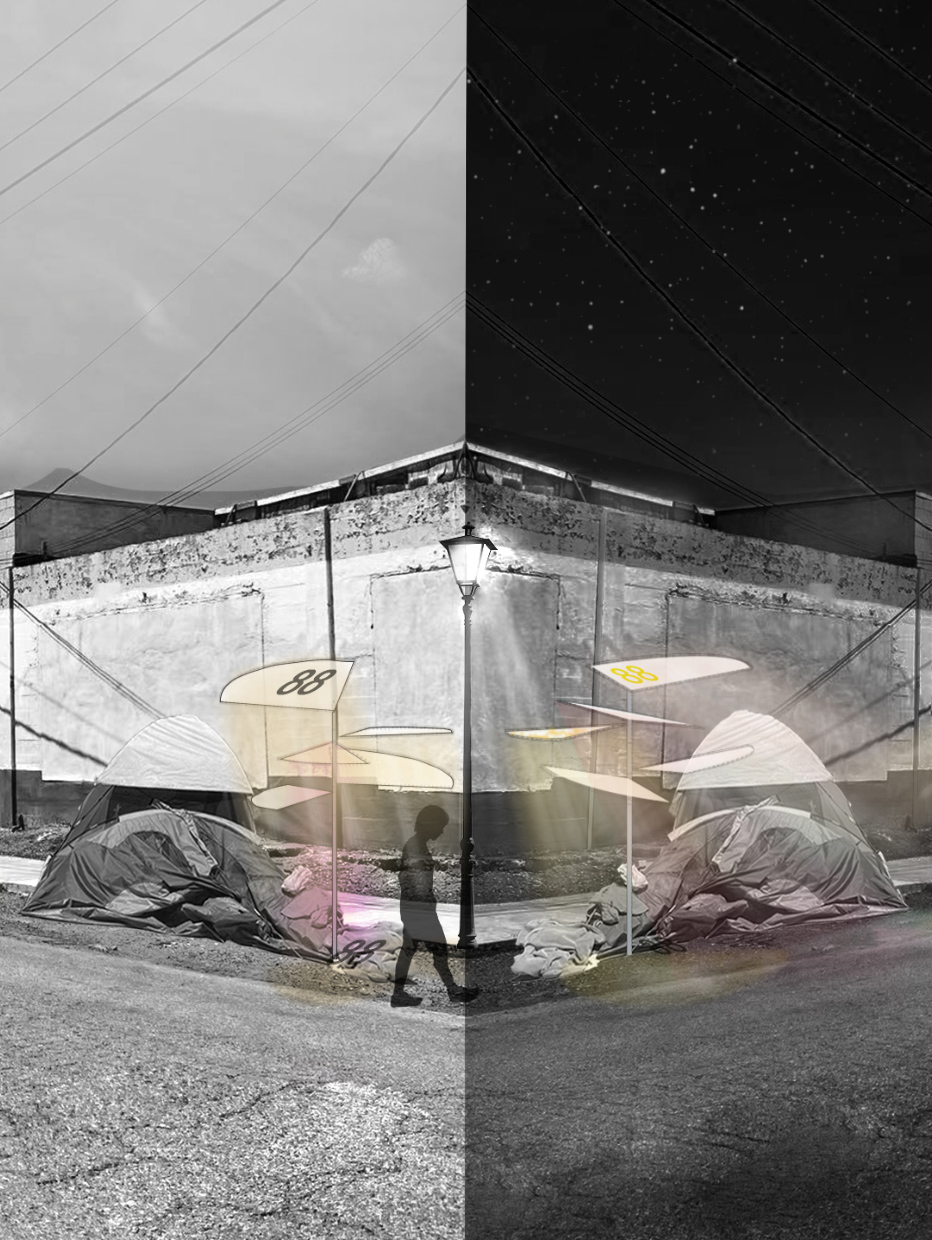Salvation Tree

Category
Daylight investigations - Region 3: The Americas
Students
Lingyi Li
Xinxin Yang
Yihan Zheng
School
City College of San Francisco
Country
United States
Download
Download ↓
Since the epidemic started, the number of homeless people in Oakland, California, has risen dramatically, from 24% over the past three yeas, and the social ecology has changed dramatically as well: cities and communities have become chaotic, and the lines between public and private spaces have been blurred. Homeless people live in increasingly harsh conditions and are cut off from their communities, leading lives in which loneliness, isolation, and even despair are all too common.By passing on the light we hope to increase the hope of the homeless to live on and improve the lives of the community, thereby restoring a positive emotional connection between the homeless and the community. The planting of green trees in neighborhoods can serve as a link between the public and private realm, allowing interaction in public spaces to let people of different backgrounds talk to each other, heal each other, strengthen communication, and actively participate in uniting all people living in the neighborhood.All of the leaves of the tree will be made of CTP plastic paper. When daylight shines through the leaves, it will produce colored light that will be reflected onto the tents of the homeless and the ground. This will act as a screen allowing communication between people and the city. It is our hope that colored light will have a positive emotional impact on homeless individuals. It will create a bond between the individual and the community. This is just as light travels through the leaves of a tree, connecting people who were once unconnected and transmitting a sense of vitality and beauty.Additionally, it will be a new way of marking leaves by cutting out the unique numbering from reflective stickers. As daylight shines down, it blocks some of the light and casts shadows. Each number represents the number of trees. The trees will serve as distribution points for nonprofit organizations to better distribute food and other supplies.

































